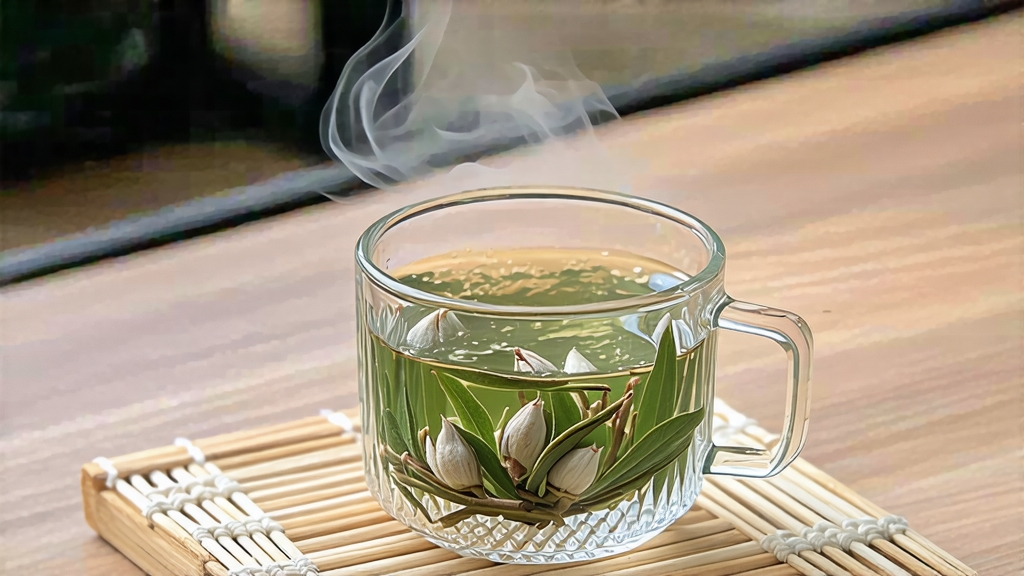
White tea is the least disturbed child of the Camellia sinensis family: leaves are allowed to age on the branch, to rest on bamboo, to whisper to the moonlight before they ever meet water. Among its sparse triad of styles—Silver Needle, White Peony, Shou Mei—Bai Hao Yin Zhen, literally “White Down Silver Needle,” sits at the apex, the most pampered, the most reticent, the most expensive two inches of leaf in all of China. Every spring, for barely ten mornings, the dew-fattened buds of the Fuding Da Bai cultivar are coaxed from the bush with thumbnail precision, never touching iron, never greeting sunlight for more than minutes. What follows is not manufacture but guardianship: a slow letting-go of moisture, a vigil against bruise or heat, until the bud keeps only what the mountain air insists it keep. The result is a tea that tastes like the first hour after snow, like licking a battery made of flowers—delicate yet electric, sweet yet humming with marine minerality.
History: from imperial elixir to Cold-War relic
Song dynasty court records already praise “white downy tea” presented to Emperor Huizong, but the first unambiguous mention of buds-only Yin Zhen appears in the 1796 Jiaqing-era county annals of Fuding, Fujian. Farmers originally produced it as a tribute medicine: buds were sun-dried, ground with rice wine, and applied to measles rash. When British merchants tasted it in 1850s Fuzhou docks they rechristened it “Pekoe Tips,” shipped it to London at ten times the price of black Keemun, and tucked it into Queen Victoria’s private pantry. During the 1960s cultural embargo the leaf all but vanished outside China; state farms replaced the ancient bush clones with high-yield shrubs destined for green-tea export. Only in 1985 did agronomist Chen Zhenhua re-graft the last 300 ancient Da Bai mother trees, rescuing the cultivar and re-certifying the original protected-origin zone along the Taimu mountain range. Today fewer than 2,000 mu (130 hectares) of authentic Fuding Yin Zhen gardens remain, all above 400 m elevation, hemmed by pine fog and the East China Sea’s salty breath.
Terroir: why Fuding tastes like tide and pine
The Taimu massif traps maritime clouds that crawl inland at dawn; they condense on tea leaves as a microscopic brine, source of the famous “kelp note” detectable in the finish. Soils are lateritic granite, poor in nitrogen but rich in potassium and fluorine, forcing roots to struggle and concentrate amino acids—especially L-theanine, which delivers Yin Zhen’s signature brothy sweetness. Night temperatures can plunge 12 °C below daytime highs, shocking the buds into locking up volatile jasmine lactones and cis-3-hexenyl acetate, the molecules later released as whispered peach and magnolia aromas.
Pluck: the 48-hour window
Authentic Yin Zhen is picked only when the overnight temperature rebounds above 13 °C but stays below 18 °C, usually 15 March–25 March. Two leaves and a bud are standard for most white styles; Yin Zhen insists on the bud alone, 2.5–3 cm long, still sheathed in its sea-urchin coat of ivory hairs. Experienced pickers use the nail of the thumb to sever the stem without squeezing cell walls; buds drop into wicker baskets lined with fresh banana leaves to prevent sun-scald. The daily harvest must finish before 10 a.m.; by noon the basket is carried on shoulder poles to the withering loft.
Craft: the art of doing almost nothing
Unlike green tea’s kill-green wok roast or black tea’s rolling oxidation, Yin Zhen’s process is a 48–72 hour choreography of wind, shade, and refusal. Buds are laid two fingers apart on reed trays stacked inside a pine-ventilated loft; moisture falls from 78 % to 12 % without ever exceeding 28 °C. Every two hours a master “tea nanny” flips the buds with a bamboo rake, sniffing for the moment grassy hexanal drops and honeyed hoto-ionone emerges. If rain threatens, trays are slid into a charcoal-warmed corridor where embers are kept at arm’s-length temperature—never above body heat—so buds dry